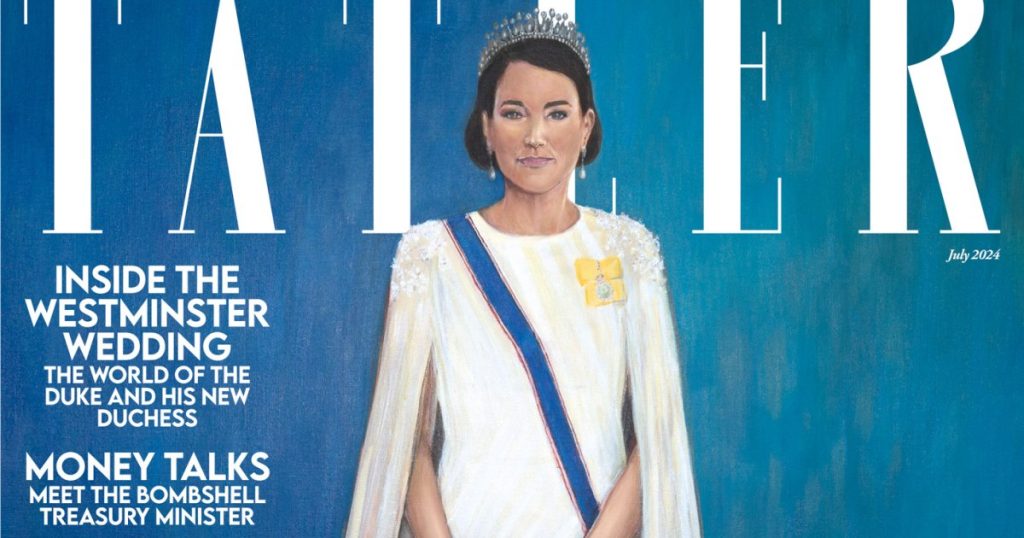A new painting of Princess Kate Middleton commissioned by Tatler magazine for the cover of its July 2024 issue has sparked controversy. Artist Hannah Uzor created the portrait of the Princess of Wales, who is currently undergoing cancer treatment, based on Kate’s appearance at King Charles III’s first state banquet in 2022. Kate did not pose for the painting, so Uzor used various photographs of her to capture her essence, creating a portrait described as a “portrait of strength and dignity.” However, the painting received a mixed response on social media when it was unveiled on Tatler’s Instagram account.
The portrait of Princess Kate is not the only recent royal painting to cause a stir. The first official portrait of King Charles III was unveiled last week and was met with shock due to artist Jonathan Yeo’s bold choice of red color for the background. In the portrait, the King is depicted wearing the uniform of the Welsh Guards and holding a sword. Yeo explained that the red color was inspired by the Welsh Guards but was also meant to provide a contemporary touch without overshadowing the King’s face and personality.
Artist Hannah Uzor, who created the portrait of Princess Kate, shared that the painting took on new significance following the Princess’s announcement of her cancer diagnosis in March. Uzor emphasized that all her portraits are constructed from various layers of a person’s personality, and Kate’s portrayal reflects her courage and grace in the face of adversity. The artist commended the Princess’s response to her diagnosis, noting her strength, dignity, and elegance. Kate’s public announcement and subsequent actions have highlighted her ability to handle difficult situations with grace.
The response to both the portrait of Princess Kate and King Charles III reveals the subjective nature of art and the varied opinions it can evoke. While some viewers praised the portraits for capturing the essence of the royal figures, others criticized them for not meeting their expectations or for deviating from traditional portrayals. The use of vibrant colors, such as red in the King’s portrait, and the interpretive nature of the paintings have sparked discussions about the role of contemporary art in representing historical figures. The portraits serve as examples of how art can provoke emotional reactions and prompt reflection on the complexities of public figures.
Despite the divisive reactions to the royal portraits, both artists have sought to convey the unique personalities and qualities of their subjects. By referencing various photographs and personal attributes, the artists aimed to capture the essence of Princess Kate and King Charles III in their paintings. Uzor and Yeo’s portraits offer interpretations of the royal figures that highlight their individuality, portraying them as multifaceted individuals with distinct characteristics. The portraits serve as artistic expressions of the complexities and nuances of the royal family members, inviting viewers to consider the portrayal of power and authority in contemporary art.
As the royal portraits continue to spark debate and discussion, they underscore the enduring fascination with the British monarchy and the individuals who comprise it. The interpretive nature of portraiture allows artists to offer unique perspectives on historical figures, challenging viewers to reconsider their perceptions and expectations. The portrayal of Princess Kate and King Charles III in recent paintings reflects the artists’ desire to communicate the essence of their subjects beyond traditional royal imagery. Through their creative interpretations, artists like Hannah Uzor and Jonathan Yeo contribute to a broader conversation about the intersection of art, royalty, and public perception.


